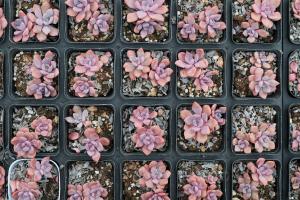How do Plants Photosynthesize Under Water?
Photosynthesis is a process that plants use to manufacture their food. It involves converting light energy into chemical energy that the plants can store and use for their growth and development. While most of us know that plants photosynthesize on land, some plants can carry out this process underwater. However, photosynthesis underwater is different from photosynthesis on land in some ways, and this article will explore how plants photosynthesize under water.
The Importance of Light and Water Flow
Just like plants on land, underwater plants require light and carbon dioxide (CO2) to photosynthesize. However, water absorbs light more than air, which means that underwater plants receive less light than their terrestrial counterparts. To compensate for this, these plants have evolved to use all available sources of light, including those from the blue and red ends of the spectrum, which penetrate deeper into the water.
Another critical factor in the underwater photosynthesis process is water flow. Unlike air, water can move around plants and cause a fluctuation in CO2 concentration, which can affect the rate of photosynthesis. Water movement also helps to carry the oxygen produced during photosynthesis away from the plant, preventing it from accumulating and inhibiting the process.
The Adaptation of Underwater Plants
Underwater plants have several adaptations that enable them to photosynthesize effectively in their environment. One of these adaptations is the ability to have more flexible and softer leaves compared to those of land plants. This feature allows underwater plants to withstand the constant flow of water and avoid breaking or being damaged by it.
Another adaptation of underwater plants is the presence of air spaces or pockets, which help to buoy them up and keep them in a stable position. These pockets also serve to transport gases, including oxygen and CO2 to and from the plant's tissues and atmosphere, facilitating photosynthesis.
Lastly, some underwater plants have developed roots that can penetrate the sediment on the floor of the water body. These roots help to anchor the plants in place and provide them with essential nutrients for growth and development, such as phosphorus and nitrogen, which are often present in the sediment.
The Challenges of Underwater Photosynthesis
While underwater photosynthesis has its advantages, it also poses several challenges to plants. One of these challenges is the limited supply of CO2. As water moves around the plant, it can take away much of the CO2 that the plant needs to photosynthesize. To overcome this, some underwater plants have developed a CO2 concentration mechanism, which involves storing CO2 in their leaves, reducing the loss of CO2 in the water, and increasing the concentration of CO2 available for photosynthesis.
Another challenge of underwater photosynthesis is regulating the amount of oxygen produced. Unlike on land, underwater plants cannot release oxygen into the atmosphere but must rely on water to transport it away from the plant. If too much oxygen accumulates around the plant, it can inhibit photosynthesis and even lead to the plant's death. To manage this, some underwater plants produce less oxygen during photosynthesis or have specialized structures that help to transport oxygen away quickly.
The Future of Underwater Photosynthesis Research
Despite the challenges of underwater photosynthesis, researchers have studied this process to better understand the impacts of global climate change on aquatic plants. With the increased emission of CO2 in the atmosphere, more CO2 is absorbed into the water bodies, which can affect the availability of this gas for underwater plants. By researching underwater photosynthesis, scientists hope to understand how these plants will adapt to the changing conditions and how these changes will impact the overall health of aquatic ecosystems.
In conclusion, plants photosynthesize underwater by adapting to the challenges posed by their environment. They require a regulated supply of CO2, manage the amount of oxygen produced, and depend on water flow to transport these gases around the plant. Understanding this process is essential in preserving aquatic ecosystems and ensuring the continued growth of underwater plants and organisms.

 how many times do yo...
how many times do yo... how many planted tre...
how many planted tre... how many pine trees ...
how many pine trees ... how many pecan trees...
how many pecan trees... how many plants comp...
how many plants comp... how many plants can ...
how many plants can ... how many plants and ...
how many plants and ... how many pepper plan...
how many pepper plan...

































